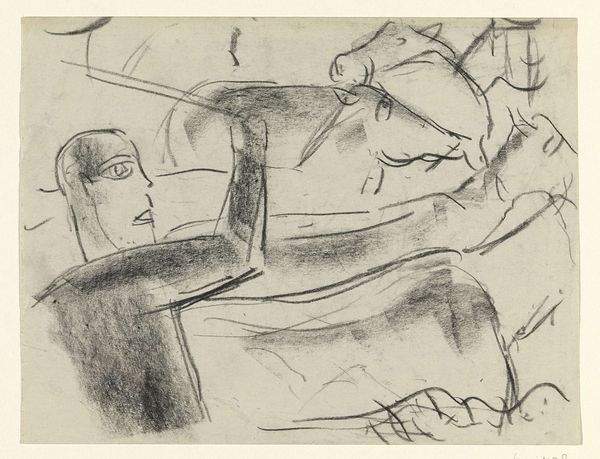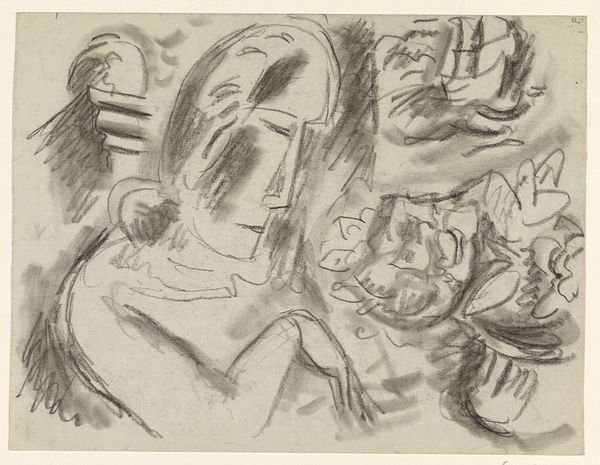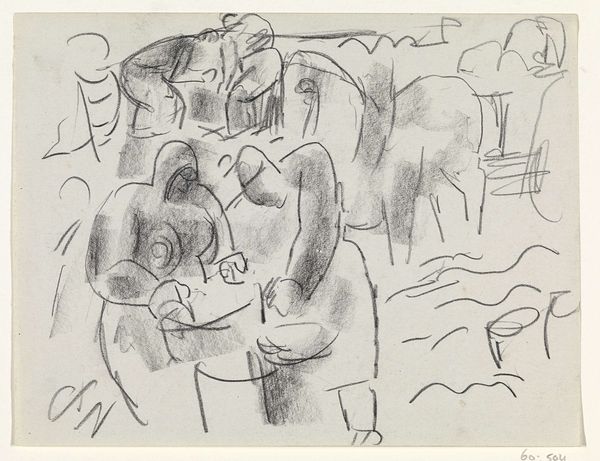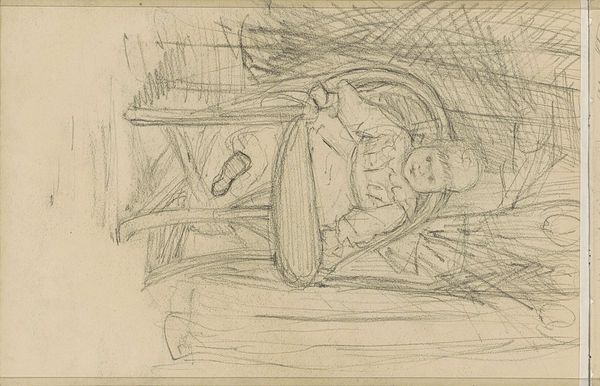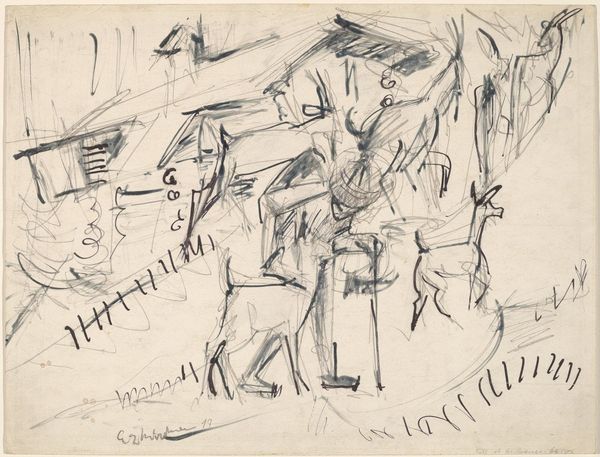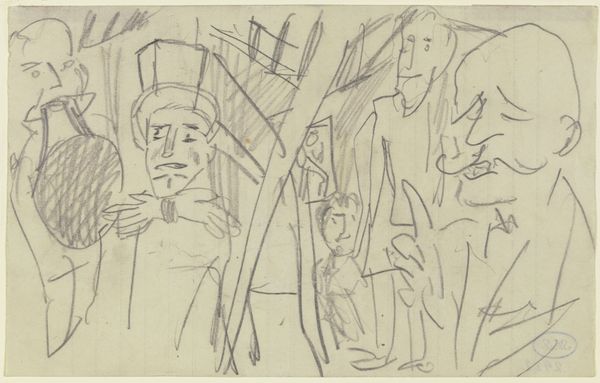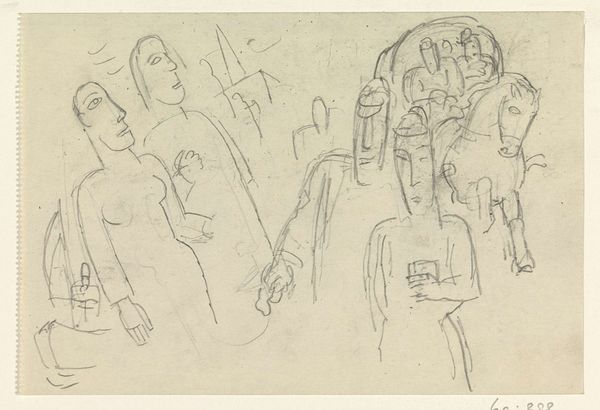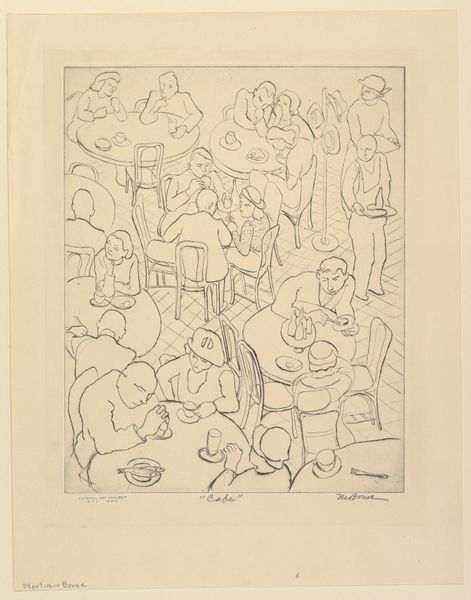
drawing, graphite
#
portrait
#
drawing
#
landscape
#
figuration
#
expressionism
#
horse
#
graphite
Dimensions: height 138 mm, width 202 mm
Copyright: Rijks Museum: Open Domain
Editor: We're looking at Leo Gestel's drawing "Mensen, gezichten en een paard", or "People, faces and a horse," which could have been created anytime between 1891 and 1941. It's made with graphite, and there is such a striking, unsettling density to the composition, the way these distorted figures are packed together. What do you make of it? Curator: The immediate visual impact stems from Gestel's distortion of form. Observe how lines are not employed descriptively but rather expressively. The artist eschews naturalistic representation in favor of angular, exaggerated features. The horse, seemingly an afterthought, exists on the same plane as the faces, flattening depth. What principles can you find at work, regarding structure and the relationship between objects? Editor: I think that's right about flattening depth. The horse is not "behind" the faces; it seems more like another shape *among* the faces. Would that indicate the influence of Cubism, or a pre-cursor of such flatness? Curator: Precisely. The compressed space, devoid of traditional perspective, can be interpreted as Gestel's engagement with emerging Cubist principles, yet distinct because of Expressionist aims. Semiotically, we can view each face as a signifier of psychological intensity rather than a mere physical likeness. How does the absence of color contribute to this? Editor: It really heightens the tension. I feel that the graphite emphasizes line and form, focusing our attention on the expressive distortion of the figures rather than getting distracted by color. Thank you for opening my eyes to how line and structure contribute to this drawing's impact! Curator: The interplay between line and distorted form generates the work's emotional potency and unsettling tone.
Comments
No comments
Be the first to comment and join the conversation on the ultimate creative platform.
